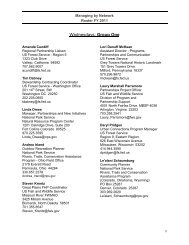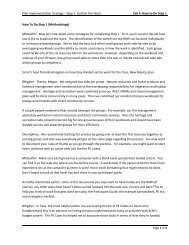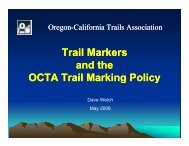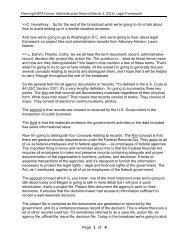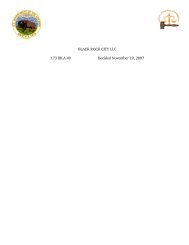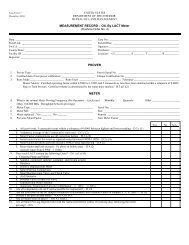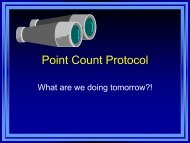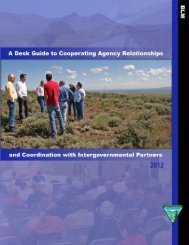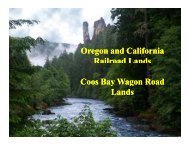view the video transcript - National Training Center
view the video transcript - National Training Center
view the video transcript - National Training Center
- No tags were found...
You also want an ePaper? Increase the reach of your titles
YUMPU automatically turns print PDFs into web optimized ePapers that Google loves.
Rangeland Improvement Project System – RIPS IntroductionWelcome to <strong>the</strong> introduction to Rangeland Improvement Project System, RIPS.My name is Phillip Cooley and I am one of <strong>the</strong> RAS and RIPS user reps at <strong>the</strong><strong>National</strong> Operations <strong>Center</strong>. After this training, you should be able to create anew project record, edit an existing project record, create a maintenance recordfor an existing range improvement project, abandon a range improvementproject, and produce an assignment of range improvements report to be usedduring <strong>the</strong> transfer process.Some background on RIPS. RIPS is a legacy system which providesmanagement data regarding range improvements such as spring developments,cattle guards, exclosures, and o<strong>the</strong>rs. The current version of RIPS is <strong>the</strong> thirdrange improvement tracking system used by <strong>the</strong> BLM since 1968. In 1993, <strong>the</strong>General Accounting Office reported to congress that BLM’s range improvementproject database is incomplete and inaccurate. So based on <strong>the</strong>se findings BLMissued guidance on <strong>the</strong> use of RIPS to record and track range improvementprojects on BLM administered lands. IM 2001-27 established policy that allprojects must be entered into RIPS. Exceptions to this include projectsassociated with facility asset management, abandoned mine lands, HazMat,natural resource damage assessment, and threatened and endangered species.It also established policy to use FFS codes to link RIPS projects to BLM financialsystems. Offices that do not enter projects in RIPS may not receive 8100allocation in <strong>the</strong> following year. To get a user account for RIPS, you will need tocomplete Form 1260-12. After this form is completed with all <strong>the</strong> appropriatePage 1 of 2
Rangeland Improvement Project System – RIPS Introductionsignatures, fax <strong>the</strong> form to <strong>the</strong> RIPS user reps at 303-236-6450 or 303-236-3508.Form 1260-12 can be found at NTC Knowledge Resource <strong>Center</strong>. After <strong>the</strong> formhas been received by <strong>the</strong> user reps, you will receive your user accountinformation.There are two working environments in RIPS. Production is <strong>the</strong> environmentused to store and report actual data for all range improvement projects on BLMadministered lands. Test training is <strong>the</strong> environment used to test new features toensure <strong>the</strong>y work properly before being deployed in production. Thisenvironment can also be used by field users for training, practice, and whateverelse without changing <strong>the</strong> actual data. RIPS production can be accessed at <strong>the</strong>following BLM internal web address. RIPS test training can be accessed at <strong>the</strong>following BLM internal web address.For questions regarding this or o<strong>the</strong>r RAS or RIPS training sessions, pleasecontact <strong>the</strong> RAS and RIPS user reps. Leon Pack is located at <strong>the</strong> <strong>National</strong>Operations <strong>Center</strong>. Leon has been a user rep for <strong>the</strong> RAS and RIPS systemssince 1989. I am also located at <strong>the</strong> <strong>National</strong> Operations <strong>Center</strong>, and I’ve been auser rep for RAS and RIPS since 2005.Page 2 of 2




